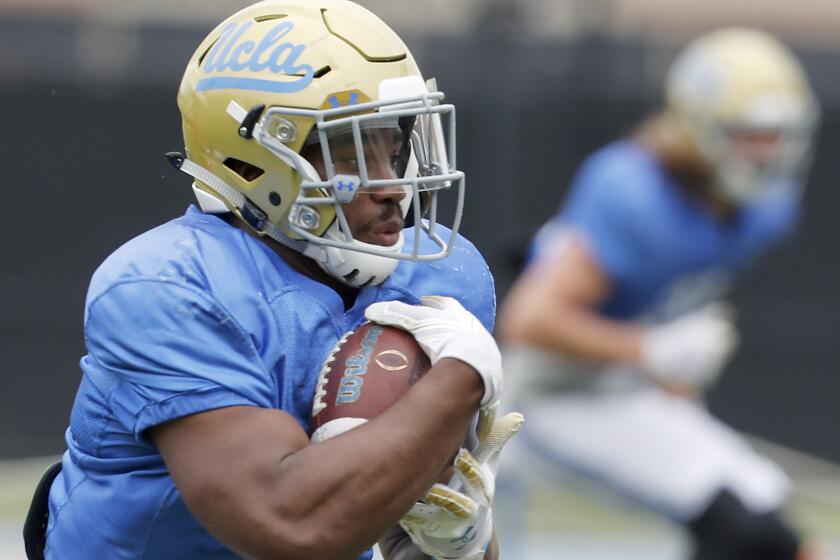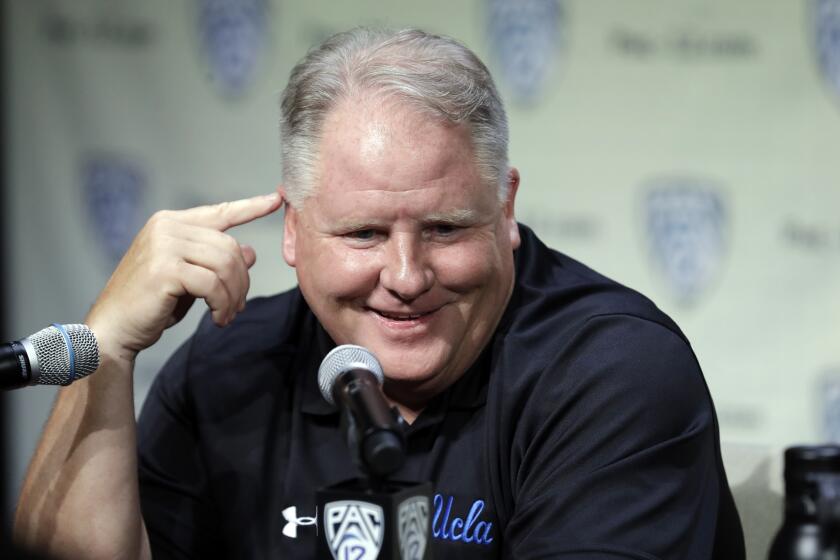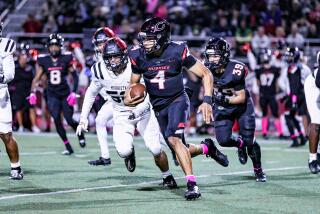UCLAâs 31-year-old punter Wade Lees continues his life journey in Westwood
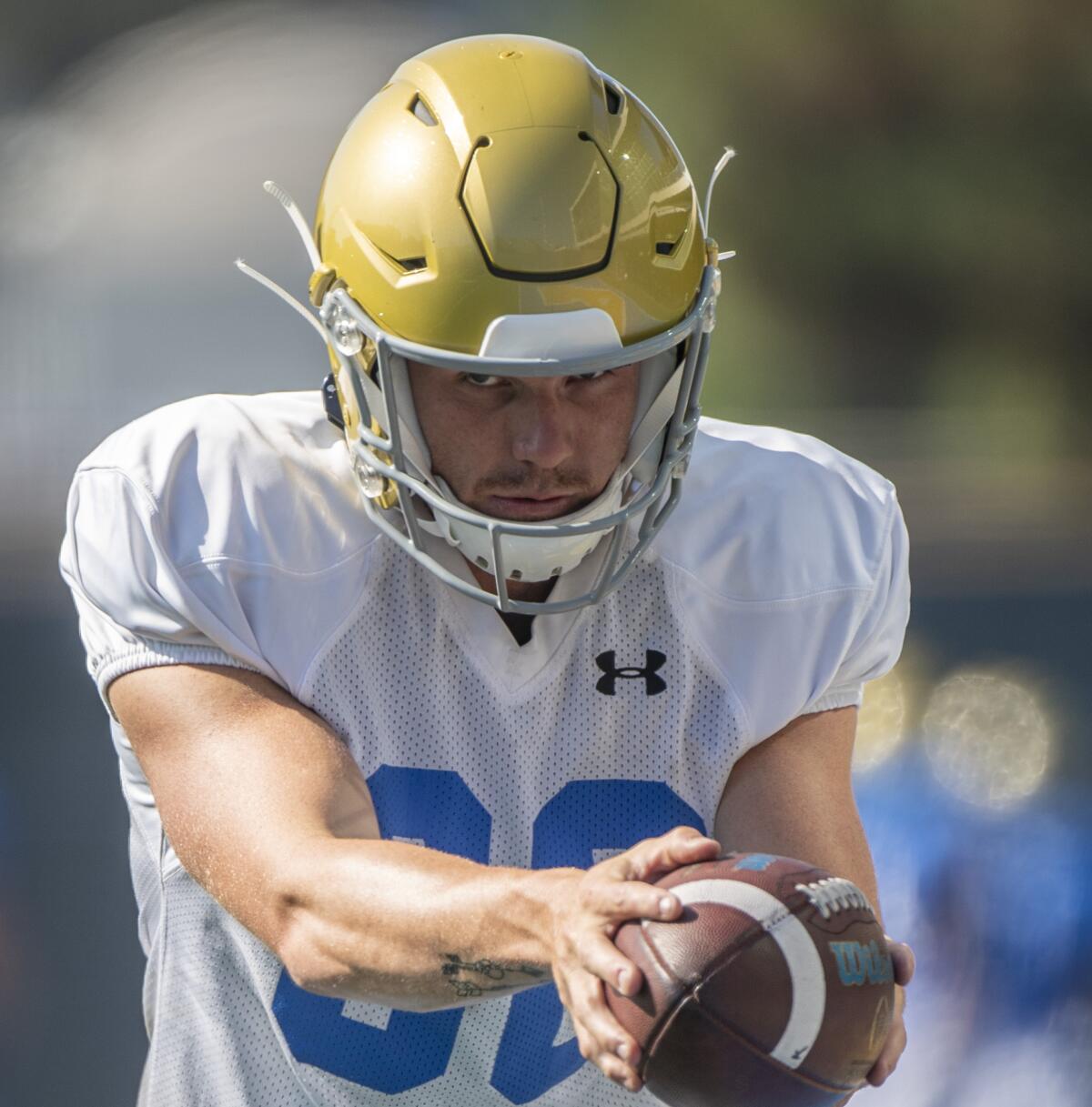
He wouldnât be here now if just one thing didnât go so terribly wrong.
His single motherâs back troubles that required five surgeries and forced him to drop out of high school to get a job installing utility pipes.
His suspension from Australian rules football for ordering a fat-burning product that contained traces of a banned substance.
His college teammate dying from heatstroke and his coach getting placed on indefinite leave only to be reinstated and dismissed the following day.
All of it led Wade Lees to UCLA, and thatâs the only thing that mattered as the 31-year-old punter stood on the edge of a practice field and contemplated his unlikely final college season.
âThereâs a bit of a story behind that,â Lees said this week with a wry smile. âI had no intentions of even coming over here.â
The graduate transfer from Maryland who is believed to be the second-oldest player in major college football arrived in Westwood this summer with what might be considered its most zigzagging journey.
Lees has been around so long that his Terrapins teammates called him âThe Godfather,â a reference to his being a decade older than some players and nearly as old as some coaches during his three years in College Park, Md.
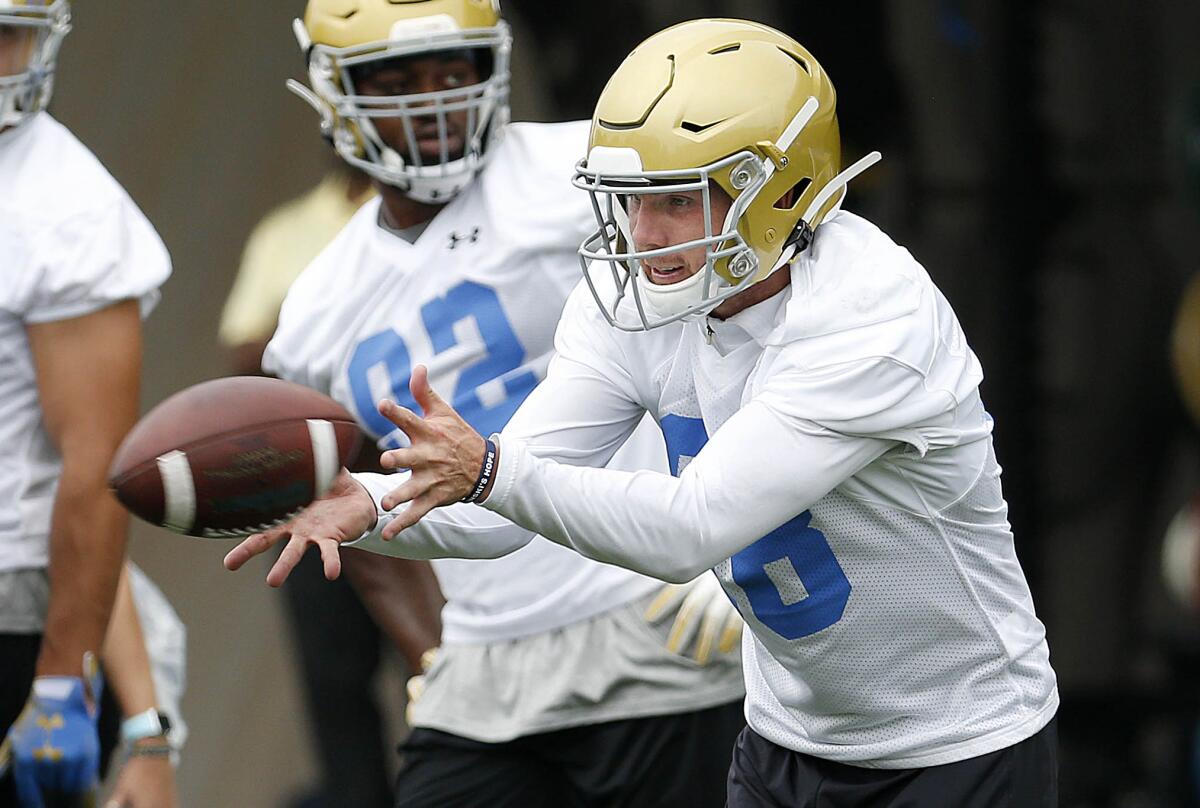
His new teammates havenât given him any good-natured grief, though the only Bruin born when Terry Donahue was still coaching the team might want to gird himself for the possibility.
âI feel like I gotta get to know someone more,â sophomore quarterback Austin Burton said, âbefore I make an old man joke.â
Lees knows what itâs like to be on the other end of the spectrum, having played Australian rules football alongside 30-year-olds as a teenager. Had things worked out the way the Melbourne native originally hoped, he would be starring in the Australian Football League.
Now heâs vying for a shot at the NFL after switching schools for his final audition.
The death of Marylandâs Jordan McNair last year and the resulting brouhaha that led to the firing of coach DJ Durkin created an uneasy uncertainty.
Lees was also seeking to relocate to Los Angeles because itâs closer to home and could be a lucrative landing spot if he doesnât make it in professional football.
âItâs just like this is the mecca for everything here,â Lees said, noting the possibilities in the entertainment industry.
His big break as UCLAâs likely starting punter came as a result of Stefan Flintoftâs departure after last season.
Lees brings impressive credentials, having twice landed on the watch list for the Ray Guy Award that goes to the nationâs top college punter. He booted a 67-yard punt against Michigan State last season and completed a pass for a first down on a fake punt during the Terrapinsâ upset bid against Ohio State that fell short in overtime.
Lees is left-footed but can punt with either foot and has learned to kick the traditional spiral in addition to the rugby style with its wicked spin that can be difficult to catch.
âHe can roll out left and kick it all the way back to the right,â said UCLA receiver Jaylen Erwin, one of the teamâs punt returners. âSo he knows how to play little mind games with us.â
With several UCLA tailbacks limited, Martell Irby, a sophomore, has gotten a lot of extra work in training camp. Irby was the Bruinsâ third-leading rusher in 2018.
Lees was once a prospect for the AFL before Australian customs in 2012 intercepted a package containing a fat-burner from the United States that Lees said he ordered to reduce skin folds after gaining weight following surgery. The supplement contained a banned steroid and officials suspended Lees for 18 months even though he never took it and said he was unaware that it contained an illicit substance.
His interest in American football was sparked the following year during a trip to the United States after driving to Tampa, Fla., to watch an NFL game between the Philadelphia Eagles and Tampa Bay Buccaneers. Lees had no way of knowing that day that the Eaglesâ coach, Chip Kelly, would eventually become his coach at UCLA.
When Lees watched a college football game on television the same weekend, he saw former Australian rules player Cameron Johnston punting for Ohio State before 105,000 fans.
âI was like, man, I want to do this,â recalled Lees, who was 25 at the time.
It wasnât going to be easy. Lees sent a Facebook message to Johnston, an acquaintance who connected him with Nathan Chapman, the owner of an Australian kicking academy that had helped send a slew of punters to U.S. colleges.

UCLA punter Wade Lees practicing his punts.
Lees trained with Chapman for more than two years as part of a whirlwind existence. He helped care for his mother and worked full time in his construction job while trying to gain college eligibility after having long abandoned his high school studies.
The pursuit would involve obtaining his general equivalency degree and completing college coursework, if he could find a college that would accept him.
He was rejected by three schools before finally enrolling at Deakin University in Melbourne upon touting his life experience as an Aussie rules player to gain entry into a sports management program. His studies sometimes kept him up until 4 in the morning.
âHeâs taught me so much about life,â Leesâ mother, Kim Richardson, said during a telephone interview from her home in Cairns, Australia. âAnything can happen, you just never give up, you never let go. Doors close, you just keep finding another one to open.â
Leesâ mother initially thought he intended to gamble when he told her he wanted to punt because the word means to wager on the outcome of a race in Australian lingo. He explained his intentions and showed his skills to his mother and his wife-to-be, Caitlin, when they helped him train by feeding a ball-launching machine set up in the backyard and chasing down his punts at a local park.
J. Brady McCollough looks at the biggest storylines in college football ahead of the 2019 season.
It was enough for Lees to draw preliminary interest from Michigan and Clemson before Maryland offered a scholarship. Lees arrived in College Park prior to the 2016 season as a 28-year-old freshman, leading to some barbs that havenât followed him across the country.
âA few times at Maryland, youâd caught a bit of stick here or there about being older,â Lees said, âbut I havenât had anything from these guys [at UCLA]. These guys are all about ball.â
Lees found an apartment about 15 minutes from campus that he shares with Caitlin. The couple got married in Hawaii last month, but the groom cut short the honeymoon by three days so that he could resume workouts with his new teammates.
Said Wade: âLuckily, she was understanding. But I promised a trip to Mexico or something at the end of the year.â
Said Caitlin: âHe better come good on that.â
Australian punters have become so commonplace in college football that Lees must only glance across town to find another one. Heâs Ben Griffiths, a 27-year-old USC redshirt freshman from Melbourne who has hung out at the beach with his countryman. Lees is also friends with Coloradoâs James Stefanou, who at 32 is the oldest player in college football.
But only Lees has gone from onetime dropout to the verge of having four college degrees. He obtained a bachelorâs degree in communications from Maryland and is completing one online in sports management from Deakin. He also has a masterâs degree in business and management from Maryland and is completing one in education at UCLA.
âItâs crazy to think about where he started and all of the obstacles that were in his way,â Caitlin said. âNow weâre here, and who would have thought?â
More to Read
Go beyond the scoreboard
Get the latest on L.A.'s teams in the daily Sports Report newsletter.
You may occasionally receive promotional content from the Los Angeles Times.

